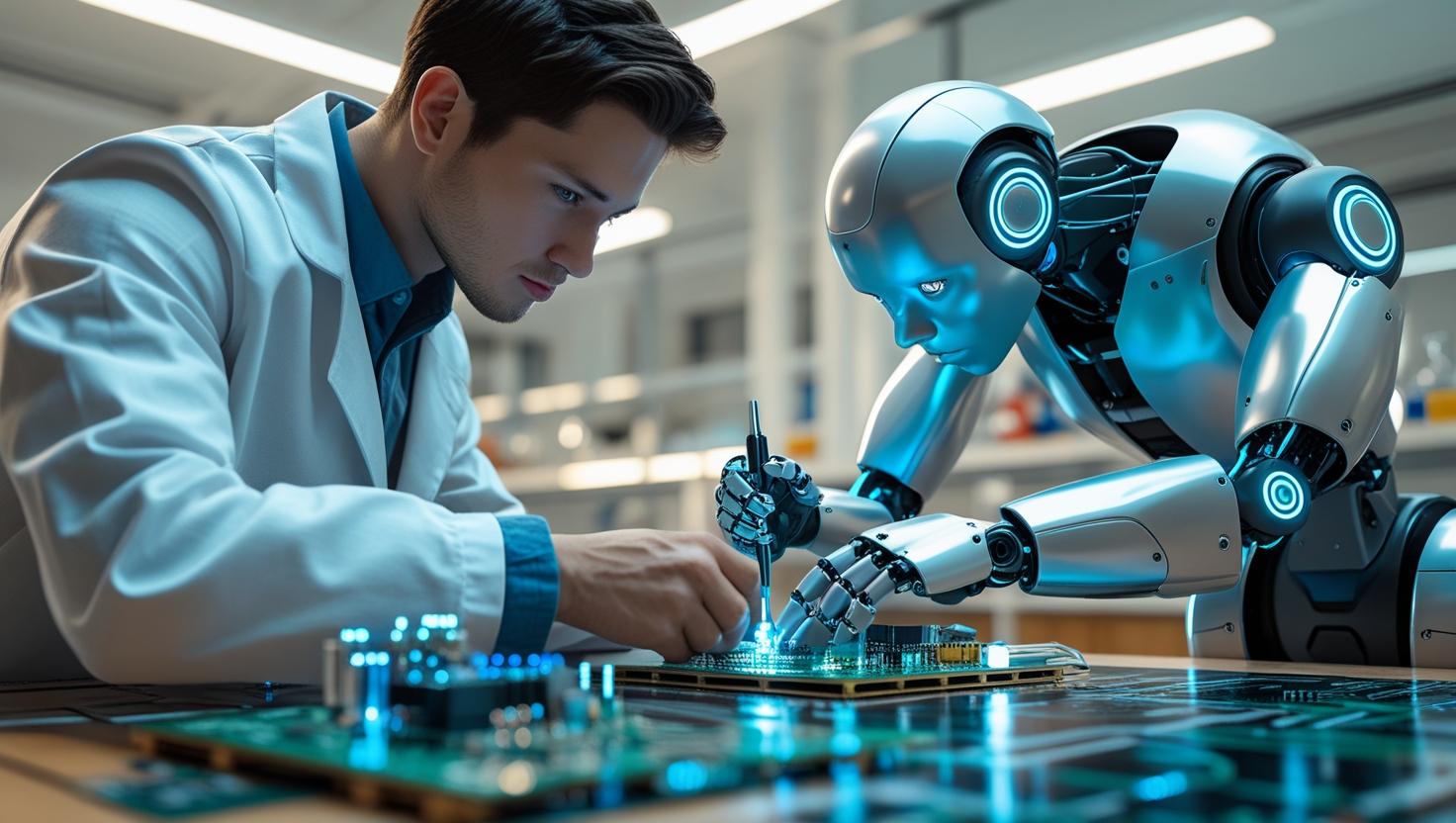The integration of human-robot collaboration (HRC) in manufacturing is no longer a futuristic concept—it is a present-day reality transforming industries such as automotive and electronics. Collaborative robots, or cobots, are designed to work alongside humans safely and efficiently, blending the precision and endurance of machines with the problem-solving skills and adaptability of human workers. This shift is unlocking new levels of productivity, safety, and innovation.
Redefining Automotive Manufacturing
In the automotive sector, human-robot collaboration is reshaping assembly lines. Cobots handle repetitive, labor-intensive tasks such as welding, painting, and component placement, while human workers focus on quality control, design adjustments, and problem-solving. This division of labor reduces fatigue-related errors and ensures consistent quality, even with complex vehicle designs.
Moreover, as the industry pivots to electric vehicles (EVs), cobots are playing a critical role in handling delicate battery modules and high-voltage components. By working closely with human teams, robots enable flexible production lines that can adapt quickly to evolving EV technologies, accelerating time-to-market and maintaining safety standards.
Driving Efficiency in Electronics Manufacturing
Electronics manufacturing thrives on precision and speed, making it an ideal environment for human-robot collaboration. Cobots are increasingly deployed for tasks such as circuit board assembly, microchip placement, and product testing. These processes demand a level of accuracy and repeatability that robots excel at, while humans oversee troubleshooting, innovation, and creative decision-making.
The global Human-Robot Collaboration market growth is projected to grow from USD 1.42 billion in 2025 to USD 3.38 billion by 2030, at a CAGR of 18.9%
Download PDF Brochure @ https://www.marketsandmarkets.com/pdfdownloadNew.asp?id=194541294

For example, in smartphone and semiconductor production, cobots enhance throughput without compromising quality, ensuring that even the smallest components are placed correctly. Human oversight ensures flexibility, particularly during product design changes or customized production runs. The result is faster scaling, higher yields, and fewer production errors.
Enhancing Workplace Safety and Flexibility
One of the most significant benefits of HRC is the improvement in workplace safety. Cobots are equipped with advanced sensors, vision systems, and safety features that allow them to detect human presence and adjust movements accordingly. This reduces the risks of accidents while allowing workers to share the same workspace without barriers.
Additionally, collaborative systems bring flexibility to modern factories. Unlike traditional industrial robots, which are often fixed in place, cobots can be reprogrammed and redeployed for new tasks. This adaptability is essential for industries such as automotive and electronics, where production demands change rapidly.
Future Outlook: A Symbiotic Workforce
The future of human-robot collaboration lies in creating symbiotic relationships where robots not only support but also learn from human workers. Integration with artificial intelligence and machine learning will allow cobots to predict needs, adapt to dynamic workflows, and work seamlessly in teams. For automotive and electronics manufacturers, this means higher agility, greater cost-efficiency, and the ability to innovate at scale.
Human-robot collaboration is no longer about replacing workers—it is about augmenting human capabilities and fostering smarter manufacturing. In both automotive and electronics industries, HRC is driving higher efficiency, precision, and safety, while preparing factories for the next wave of innovation. As manufacturers continue to embrace this model, the synergy between humans and robots will define the future of industrial production.
Frequently Asked Questions (FAQ)
1. What is human-robot collaboration (HRC)?
Human-robot collaboration (HRC) refers to the use of collaborative robots, or cobots, designed to work safely alongside humans in shared workspaces. Unlike traditional robots, cobots are flexible, easily programmable, and equipped with sensors to detect human presence.
2. How is HRC transforming automotive manufacturing?
In automotive plants, cobots assist with welding, painting, assembly, and handling delicate electric vehicle (EV) battery modules. They improve consistency, reduce human fatigue, and allow faster adaptation to new production requirements.
3. Why is HRC important in electronics manufacturing?
Electronics manufacturing requires extreme precision. Cobots handle repetitive tasks like microchip placement, PCB assembly, and testing, while human workers focus on troubleshooting, innovation, and design changes. This partnership boosts efficiency and reduces errors.
4. How does HRC improve workplace safety?
Cobots are equipped with advanced safety features such as vision systems, proximity sensors, and force-limiting mechanisms. These allow them to detect human presence and slow down or stop, minimizing the risk of accidents in shared workspaces.
